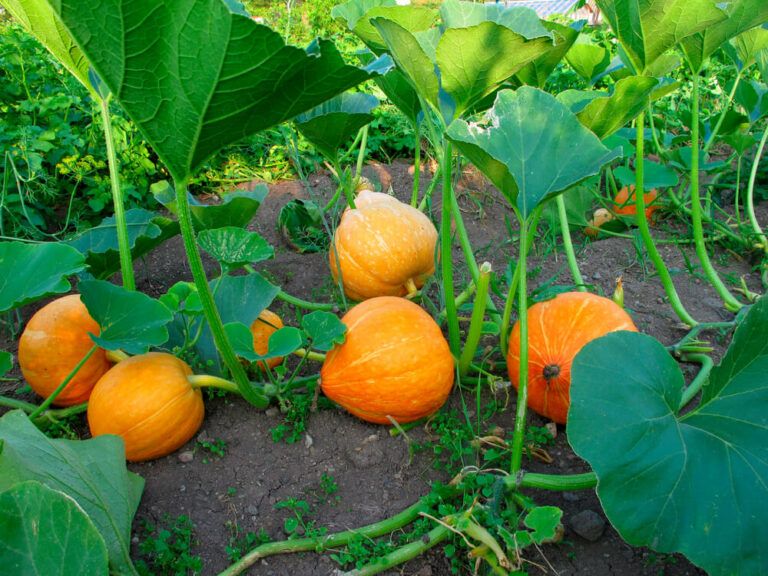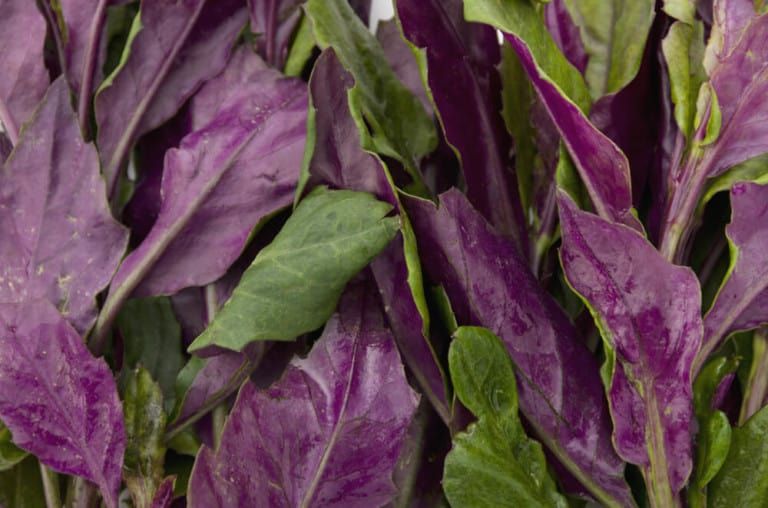The Herbaceous Layer and Edible Ground Covers In a Permaculture Food Forest
Welcome! This article contains affiliate links, meaning I get a commission if you decide to make a purchase through my links, at no extra cost to you.
Edible ground covers and the herbaceous layer of the permaculture food forest. What makes a food forest garden different from an orchard? One of the distinctions lies in what’s growing on the ground…
In conventional orchards, the ground is either mown, grazed, or even stripped bare and exposed to the ravages of burning sun, and erosion of wind and rain.
In a food forest garden, we mimic the shelter of the forest floor by planting species that are also edible, medicinal, or otherwise useful in some way.
Replicating natural conditions, we create a resilient environment where an edible ecosystem can thrive.
The first layer we talked about was the root layer, of which you can find more information in our article “The Root Layer of a Food Forest.”
In this article, we will explore some of my favorite herbaceous plants and how to best implement them in creating diverse, productive, and effective ground layers in the forest garden.
What’s Inside:
- An Overview of the Ground Layers of a Food Forest
- Starting From the Bottom – Groundcover Plants
- The Herbaceous Layer
- Fertilizing the Forest Floor
- Designing the Ground Layers of a Food Forest
- The Forest Food Web
- Everything Starts in the Soil
- On the Ground
- In the Air
- …And the Big Guys!
- Permaculture Is All About Thinking Long-Term
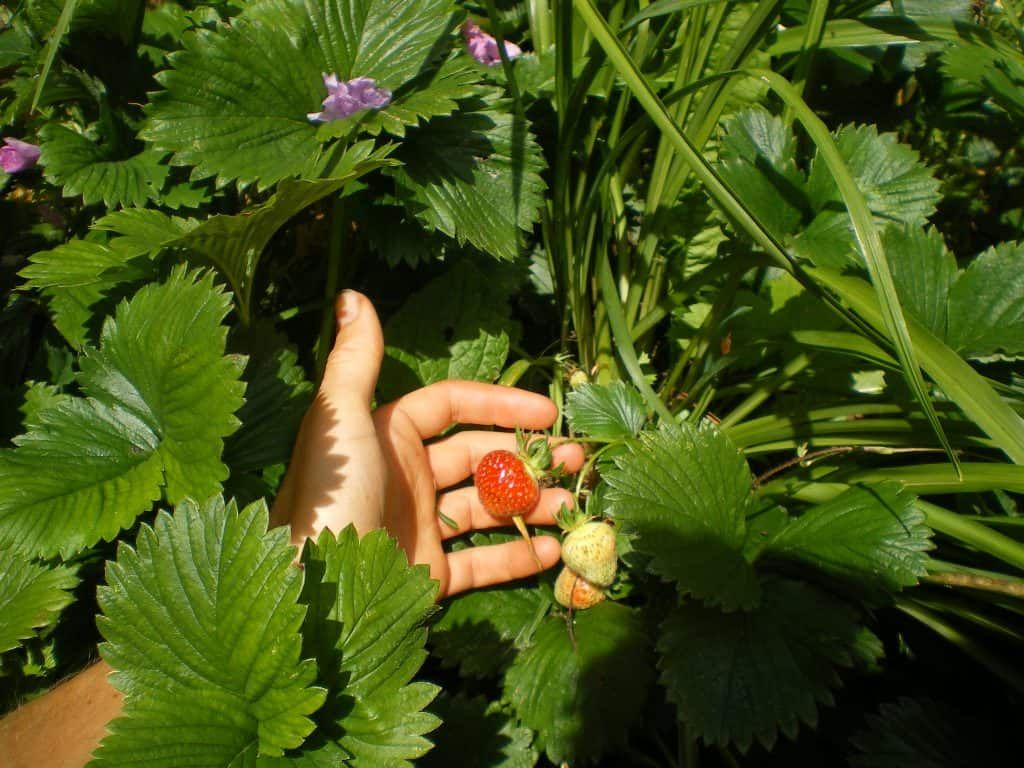
An Overview of the Ground Layers of a Food Forest
The plants that comprise the ground layer of your food forest garden can be divided into two parts:
- The groundcover layer. This layer is made up of low growing plants that create a living mulch – protecting the soil and inhibiting weed growth.
- The herbaceous layer – This layer consists of taller plants that are herbaceous (non-woody species that die back to the ground every year).

The groundcover and herbaceous layers perform a number of important functions in the forest garden:
- They protect the soil from the damage of sun, wind, and rain.
- They suppress weed growth.
- They create conducive conditions for soil organisms to thrive.
- They provide habitats and sustenance for animal life – especially insect species.
- They sequester atmospheric carbon – the building block of topsoil.
- They enrich the soil with nitrogen, potassium, and other important nutrients.
- They produce useful crops themselves!
Starting From the Bottom – Groundcover Plants
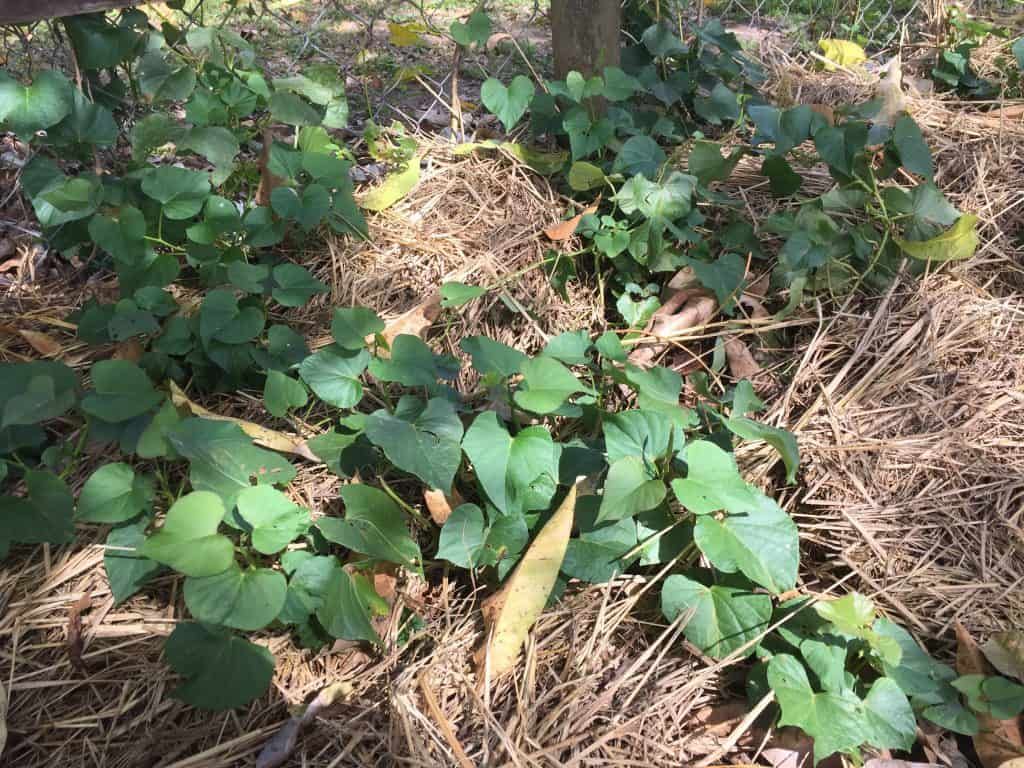
Low-growing groundcover plants are the key to a low maintenance forest garden. This is because these guys perform the same tasks the gardener would normally assume: preventing weed growth and keeping the soil in a conducive condition for growth.
To do this successfully, we must choose the right plants that will cover the ground as densely as possible, for as much of the season as possible.
The Best Forest Garden Ground Layer Species

1. Wild Strawberries
Wild Strawberries are a real favorite of mine. Not only do they do a fantastic job at spreading themselves around via runners underneath taller plants, but they provide exquisitely aromatic berries over a long season too!
2. Wild Garlic
Ramsons and Ramps (a.k.a. Wild Garlic) are some of the most versatile perennial vegetables around.
Great in salads, sandwiches, stir-fries, soups, pestos, and don’t forget to try pickling their flower buds for the gourmet touch!
Ramsons and ramps provide great groundcover but only over a short season…. they’re above ground from late winter until June, so it’s good to back them up with another plant that will succeed them. I’ve found oca and rhubarb work well for this – just harvest them more keenly if they cast shade too early on.
Amazon product3. Sweet Violets
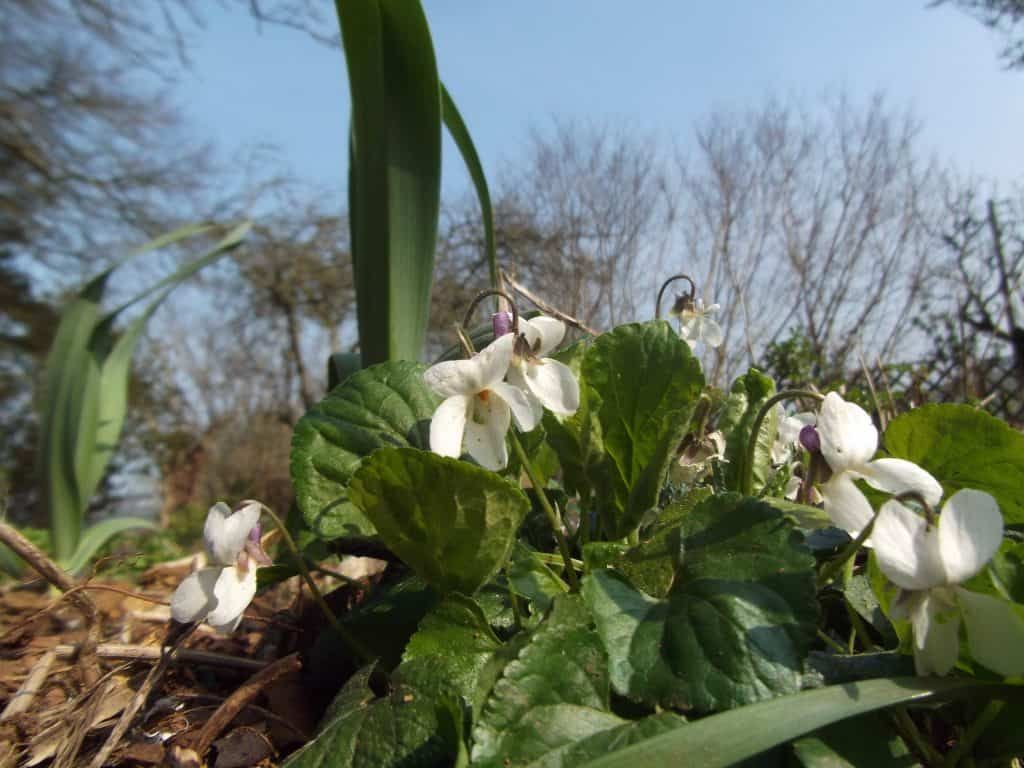
Sweet Violet (Viola odorata) is the violet from which commercial perfumes are derived.
Wafts of its heady aroma can make one quite giddy on a warm spring day as you potter about the garden! These flowers are sometimes crystallized and eaten as a delicacy, and its leaves can be included in salads.
Sweet violets make one of the best season-round ground covers, even remaining evergreen in milder regions.
Amazon productOther Fast-Spreading Groundcovers
Whilst in smaller forest gardens, you may wish for the entire ground layer to be edible, in larger gardens it might be more practical to cover certain areas with fast-spreading, robust species that won’t let any weed in sight!
For this purpose, my top picks would be Dwarf Comfrey, Sweet Woodruff, and Creeping Raspberry.
Amazon productTaller growing herbaceous species such as Apple Mint and Horsemint will also do a great job at this, as will Russian Comfrey varieties.
Amazon productOther groundcover plants I’d recommend would include Siberian Purslane, Rock Saxifrage (Saxifraga), White Clover, Bugle, Pulmonaria and if you’re looking for a self-seeding annual to overwinter – Lamb’s lettuce makes an outstanding salad leaf for the early spring.
Amazon product
The Herbaceous Layer
The herbaceous layer tends to comprise more of plants that are useful herbs and vegetables in their own right.
Some of these such as oregano, ice plants, and mints can do a great job at suppressing weeds as well, but we can also grow more delicate species like onions and fennel through the existing groundcover of smaller plants.
The Best Forest Garden Herbaceous Layer Species

1. Allium
Perennial members of the onion and garlic family are great fun to include in the food forest ground layer.
Providing fresh leaves and edible flowers for most of the year, these can replace regular onion and garlic in most recipes. Aerial parts can also be pickled or frozen for winter use – so you might even be able to give up buying bulbs from the stores altogether!
Chinese Chives, Welsh Onion, and Babington’s Leek are some of my very top picks and can be used in salads and cooking every day.
Amazon product2. Sweet Cicely
Sweet Cicely is a superbly versatile herb that is quite tolerant of shade.
It has a strong anise flavor that might not be for everyone – but if you like licorice allsorts, you’ll definitely love the young seeds of this plant which, to my tongue, taste almost identical! Its leaves, flowers, and roots also make good eating, and once it’s established it’s here to stay!
3. Daylillies
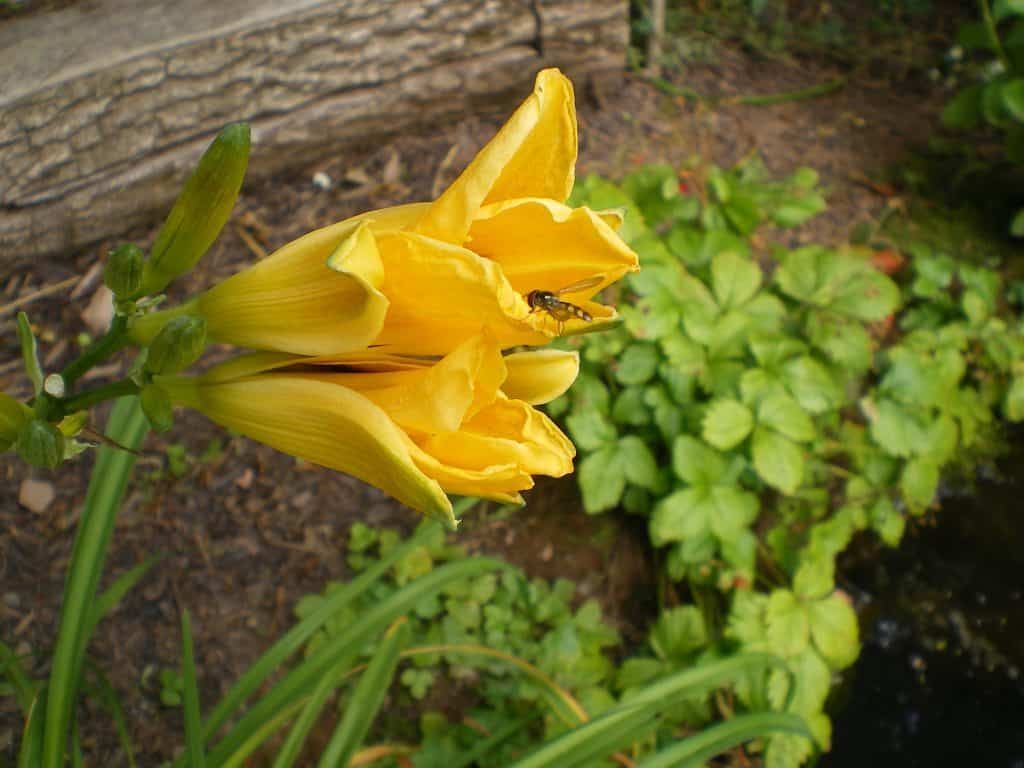
Many of the plants belonging to the herbaceous layer can be very decorative too.
Daylilies (Hemerocallis sp.) are not often grown as a vegetable in the Western world, yet in China fields of them are cultivated for their edible flowers. And a succulent, sweet, juicy flower too!
Its young leaves are also edible in small quantities when they arrive in early spring.
Amazon productIn fact, many perennial vegetables make mock of the so-called “hungry gap” – filling the spring months with an abundance of fresh leaves and flowers.
Many of these like Good King Henry, Siberian Purslane, Sea Beet, and Caucasian Spinach make wonderful spinach substitutes – and perennial species are usually richer in nutrients than their annual cousins too.
Amazon productOther herbaceous crops I’m particularly keen on include:
- Plantain
- Mallow
- Garlic Cress
- Garden Sorrel
- Globe Artichoke
- Hosta
- Ox-Eye Daisy
- Mugwort
- Perennial Brassica
- Horseradish
- Lovage

Fertilizing the Forest Floor
We can also utilize the space under the tree and shrub layers to plant species that add nutrients to the soil.
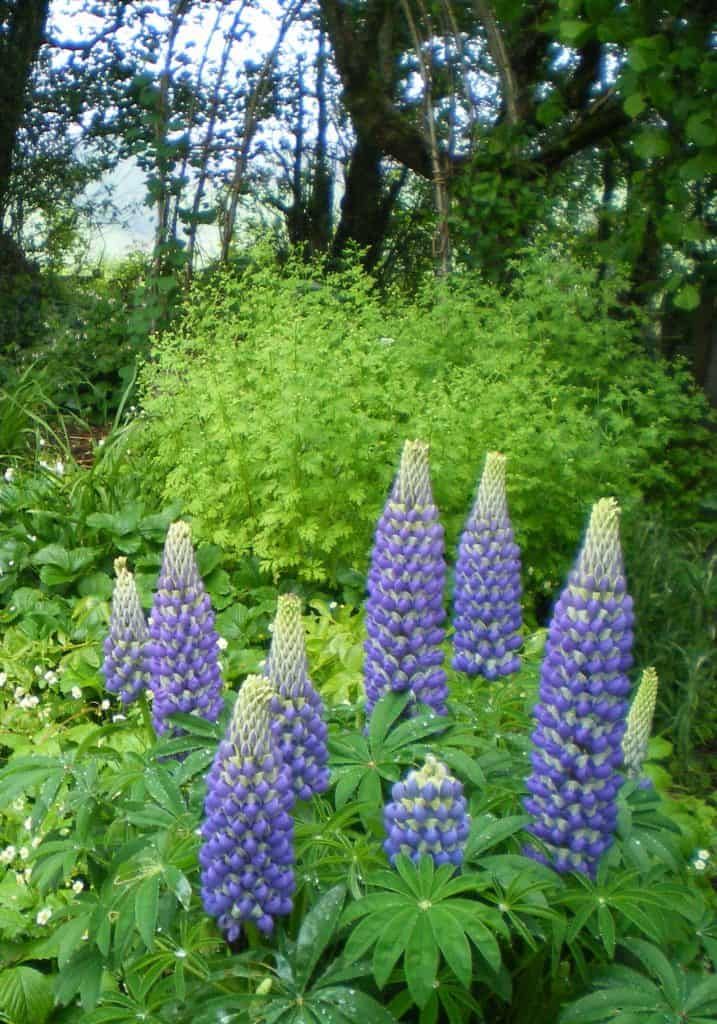
Nitrogen Fixers
Plants such as lupins, vetches and clovers are members of the pea and bean family and as such form a special symbiotic bond with nitrogen-fixing bacteria on the nodules of their roots. This nitrogen is effectively filtered from the air and condensed into solid form for the plant to use.
Amazon productWhen the plant dies back down into the soil as part of its annual cycle, this nitrogen becomes available to other members of the garden.
Nitrogen is one of the very most important nutrients for soil fertility, so having plenty of nitrogen fixers in the mix is a big step towards the overall prosperity of the garden.
Mineral Accumulators

Another way we can enrich the soil is to incorporate plants with deep roots that will mine the subsoil for minerals, bringing them up to a level where other plants can access them.
Russian Comfrey and Lucerne can plug their roots 3 meters (almost 10ft) down into the ground, accumulating nutrients that are out of reach even for some tree species!
Other tap-rooted herbs like Valerian, Pulmonaria, Rhubarb, Hogweed, Chicory, Borage, and Sorrel also make great deep divers.
Amazon productWhen we cut back the leaves of these plants and leave them on the ground, we’re supplying a nutrient-rich mulch to the surrounding soil.
When we plant these “fertilizer plants” near hungry crops such as apple trees and raspberries, we can increase overall yields and diversity at the same time.
Designing the Ground Layers of a Food Forest
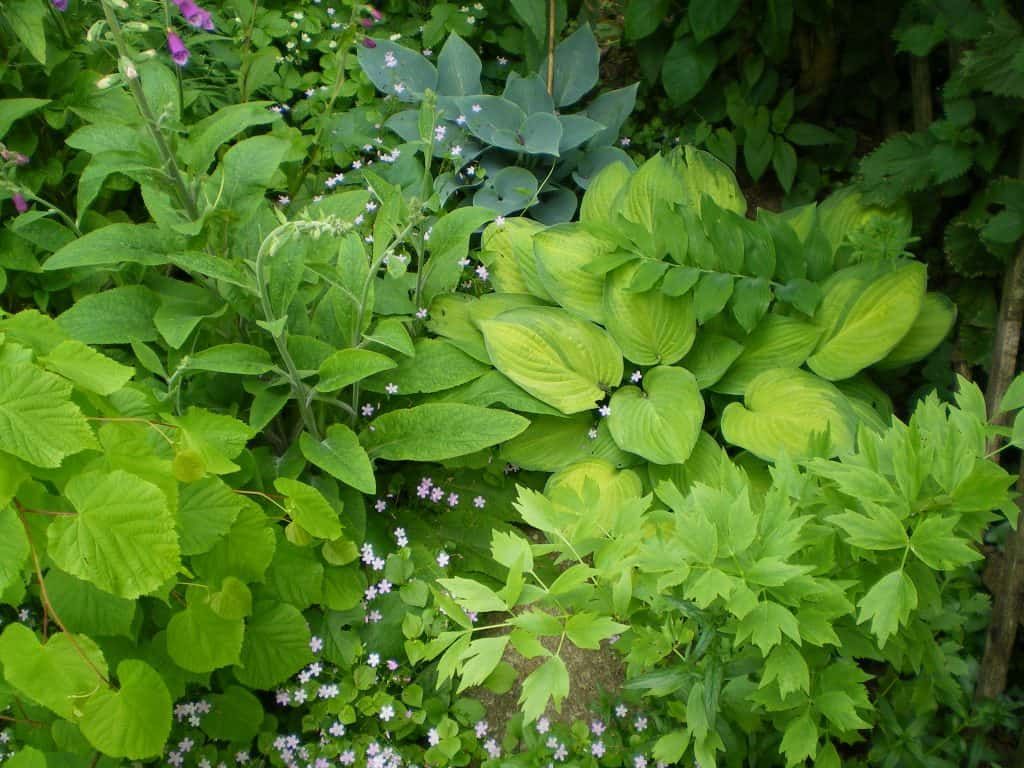
Step 1. Decide What You Want From Your Food Forest
As always, the key to starting your design is to ask yourself: “What do I really want from my forest garden?“
In the ground layer, this is especially important.
I’ve seen many people get into trouble a few years down the line with a ground layer that was ill-conceived from the beginning – without proper attention paid to which crops to prioritize, and where to plant them.
Forest gardening is meant to be efficient and fun – just be sure to be discerning in the beginning and you’ll save yourself a lot of work later on!
Step 2. Write a List of Crops You Want to Harvest
Write a list of crops that you would like to harvest from your ground layers. This should include root crops since they tend to be herbaceous too.
List your crops under categories, namely:
- Salad ingredients – leaves, flowers, and seeds
- Perennial vegetables – leaves, flowers, roots, and shoots
- Herbal teas and medicines
- Culinary herbs
Think carefully about the quantities you’ll need.
My favorite part of the ground layer is probably the amazing diversity of salad ingredients – yet for these, a few plants go a long way.
If you’re planning on replacing conventional cooked greens with perennial alternatives, you’ll need plenty of plants like Good King Henry or Wild Cabbage to provide an adequate quantity.

As mentioned in our article on roots, you can never really have enough root crops to keep you well-fed over the winter months.
And also, if you drink lots of herbal teas or like using culinary herbs in the kitchen, then I’d recommend planting plenty of these to ensure you have enough for drying and saving for those seasons when they’re less plentiful.
Now, let’s think about where to plant things…
Step 3. Where to Plant Your Plants
To maximize harvesting efficiency, it’s a very good idea to think in terms of zones!
You don’t want to have to traipse across your entire garden every time you need to cut some chives to go on your pizza! So, locating plants according to how frequently you’d harvest them is essential.
Zone 1 – Everyday Crops
Which crops will you be collecting every day?
Plant those ones closest to your house or entrance to the forest garden. Culinary herbs and teas like oregano, mint, and thyme would definitely tick this box.
Zone 2 – A Few Times a Week
Plants that you’d go to every other day or a few times a week would be your zone 2. These might include salad crops and greens for cooking.
Zone 3 – Once in a Blue Moon
Plants that you only need to harvest once in a blue moon can be planted furthest away at the rear edges of your garden.
These might include root crops or plants that only produce at particular times of the year – like globe artichokes and rhubarb.
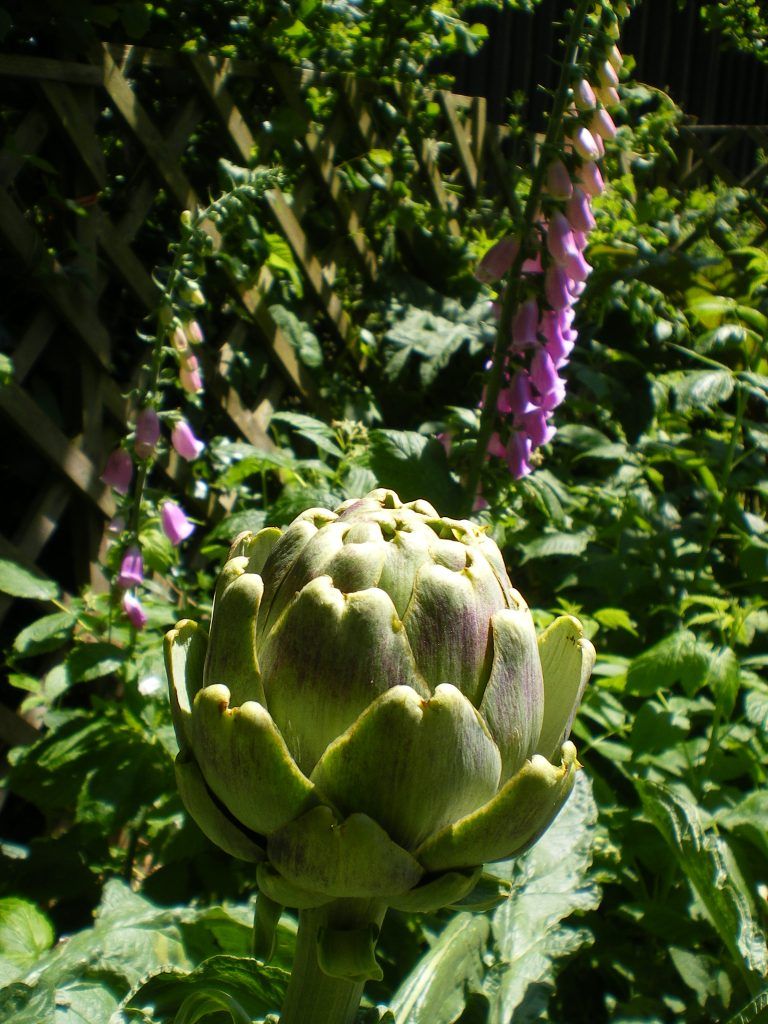
Step 4. Harmony Between All Species
Finally, how do we ensure a healthy harmony between all species?
This might be the trickiest bit of all.
Herbaceous plants like to move. Some will do this aggressively through underground rhizomes or overground runners. Others will form clumps that will gradually expand.
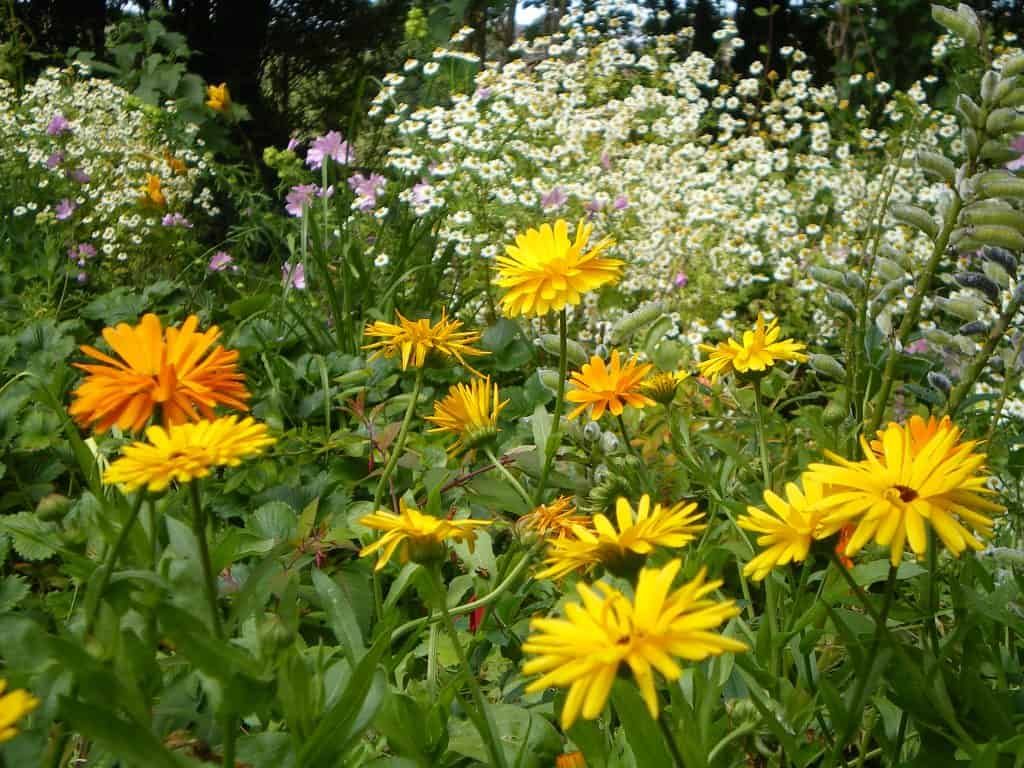
Understanding each plant’s growth habit and being able to see several years down the line is the key to the long term success of your forest garden ground layers!
If we plant an aggressive, spreading herb like peppermint a few meters away from a smaller, more delicate species like strawberries, we might have a real pickle on our hands keeping them apart after a few years.
In the worst-case scenario, we might even need to start again.
To keep each species in their allotted part of the garden, it’s essential to form barriers to prevent them all jumbling up into an epic “who can smother who the fastest” kind of fight.
Barriers, in this sense, could mean a mown or frequently trodden path, or a “living barrier.” Domineering, clump-forming plants like Russian Comfrey and Sweet Cicely won’t let much cross underneath their shady foliage.

Whilst it might take a bit of research, careful planning really does go a long way when it comes to the food forest garden ground layer. Done well, it can be the most productive layer of all.
For more information on designing your forest garden ground layer in a temperate climate, I’d highly recommend Martin Crawford’s books based on his twenty years of experience in the UK: Creating a Forest Garden and How to Grow Perennial Vegetables.
- Used Book in Good Condition
- Used Book in Good Condition
The Forest Food Web
Successful forest gardens and food forests are all about recreating the ingenious design principles that natural ecosystems were created with in the first place.
The more we go out and observe nature, the better gardeners we can be because, as our understanding deepens, we can apply that understanding to improve our garden design.
Here, we take a look at a few examples of how you can apply your understanding of forest food webs to give your forest garden that extra boost towards self-sufficiency.
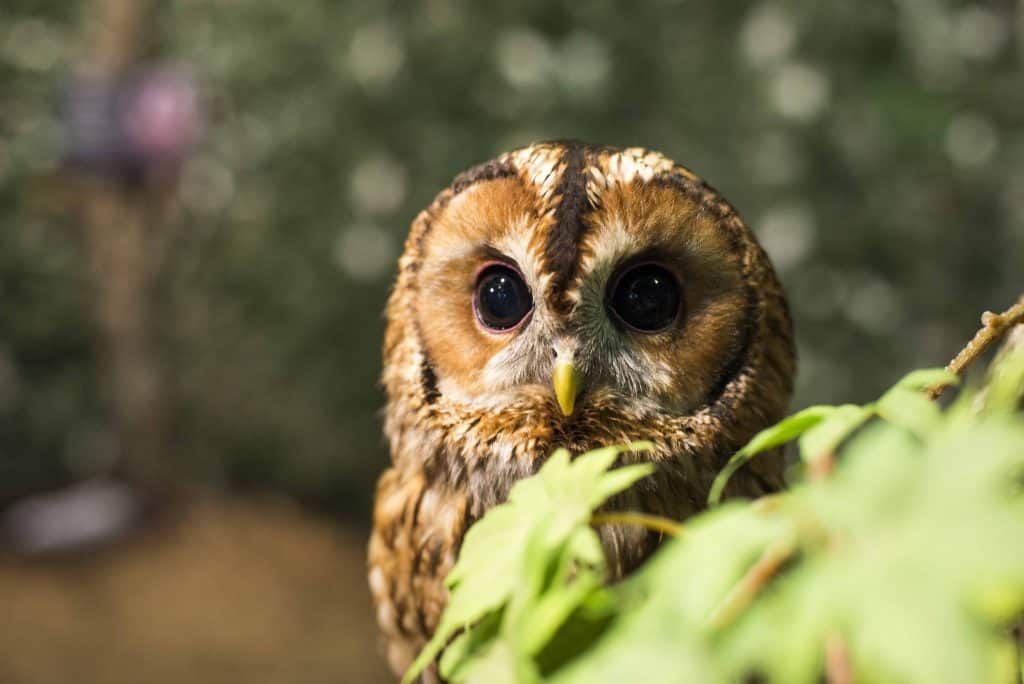
Everything Starts in the Soil
Everything starts in the soil. Healthy soil is itself a living organism made up of billions of micro-organisms. Without interference, a healthy balance in the soil will always gradually emerge under natural conditions.
We can however help fast-forward the soil’s recovery from the ravages of industrial farming or misguided garden methods by boosting micro-organism populations in the soil from the beginning.
Mycorrhizal Fungi are one of the key players in a thriving soil and do heroic work at keeping almost every family of plant happy – from the tiniest herbs to the most towering of trees.
They form networks of underground white “roots” called hyphae which link up the roots of different plants, enabling access and transportation of nutrients to where they are most needed. They also help plants resist disease, and some of them are even edible to boot!
Chanterelles, Truffles, and Boletes are some of the most sought-after of all gourmet mushrooms and each of them can only be grown in association with living plants. Harvesting mushrooms from your forest garden can be the cherry on top of the bountiful harvests you’re already receiving from your plant allies.

Incorporating mycorrhizal fungi in the form of gels, powder, or inoculated charcoal into the plant’s roots during planting time is a great way to get your soil and plants off to a running start. There are many proven products on the market for this, and the results can be quite dramatic.
- Explodes Root Growth Like Mother Nature Intended
- Exclusive 16 Species Blend Treats 95% of Global Plant Life, 9 Endo & 7 Ecto Species
- A Little Goes a Long Way , 5oz makes 250 gallons/ 25K sq ft
- East to Use and Super Effective, Requires 30% Less Water
- Washington State Certified National Organic Program (NOP)
On the Ground
Ever had a problem with slugs? Who hasn’t?!
It’s well known that amphibians – frogs, toads, and newts – love to eat slugs and snails. But you may be surprised to learn that small snakes, ground beetles, glow worms, and thrushes prey upon mollusks too.
They can all be encouraged by creating a garden pond and including plenty of rocks, logs, and overgrown areas for them to hide in.

Don’t forget that slugs and snails also play their own important role in the garden. They tend to focus on clearing away weakly plants that are not thriving anyway – so can be considered an indication rather than a cause of an unhealthy ecosystem.
And before putting them all in one basket (perhaps literally) – it’s worth noting that some species of slug actually eat very little living plant matter.
Feeding instead on fungi, dead plant material, and even other mollusks, some slugs may even become your friends! Understanding these nuances will greatly help you understand how to respond to epidemics in your garden.
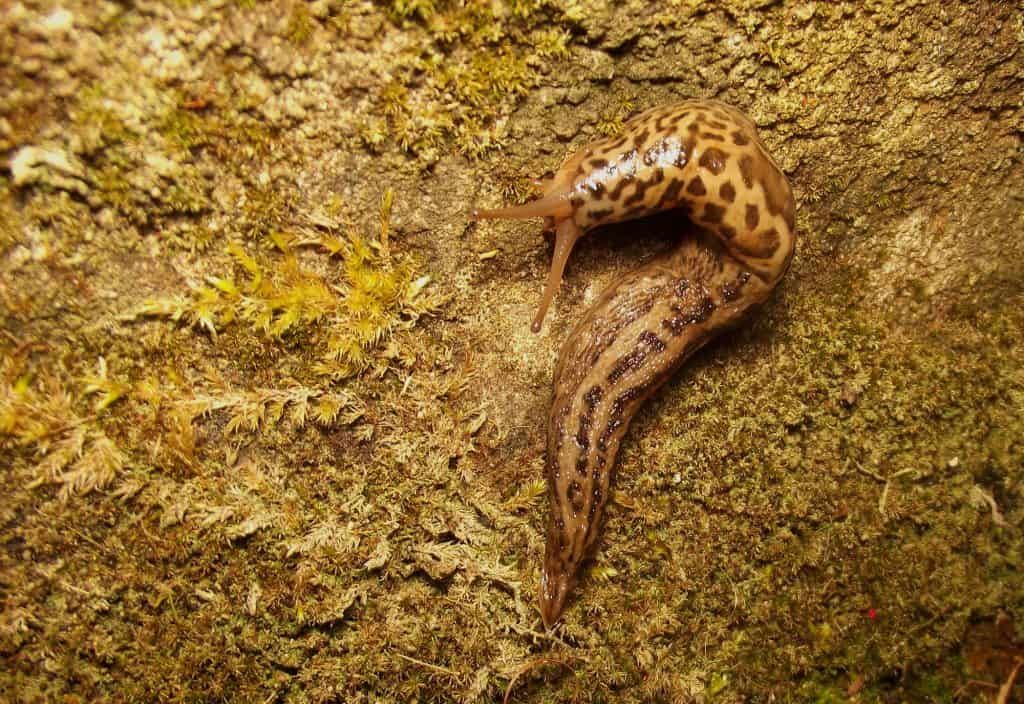
Other ground “pests” perennial gardeners may suffer from in the beginning is burrowing rodents, especially mice, voles, and shrews. These creatures can cause havoc in the short-term – their burrowing and root nibbling habits can seriously set back or even kill young plants.
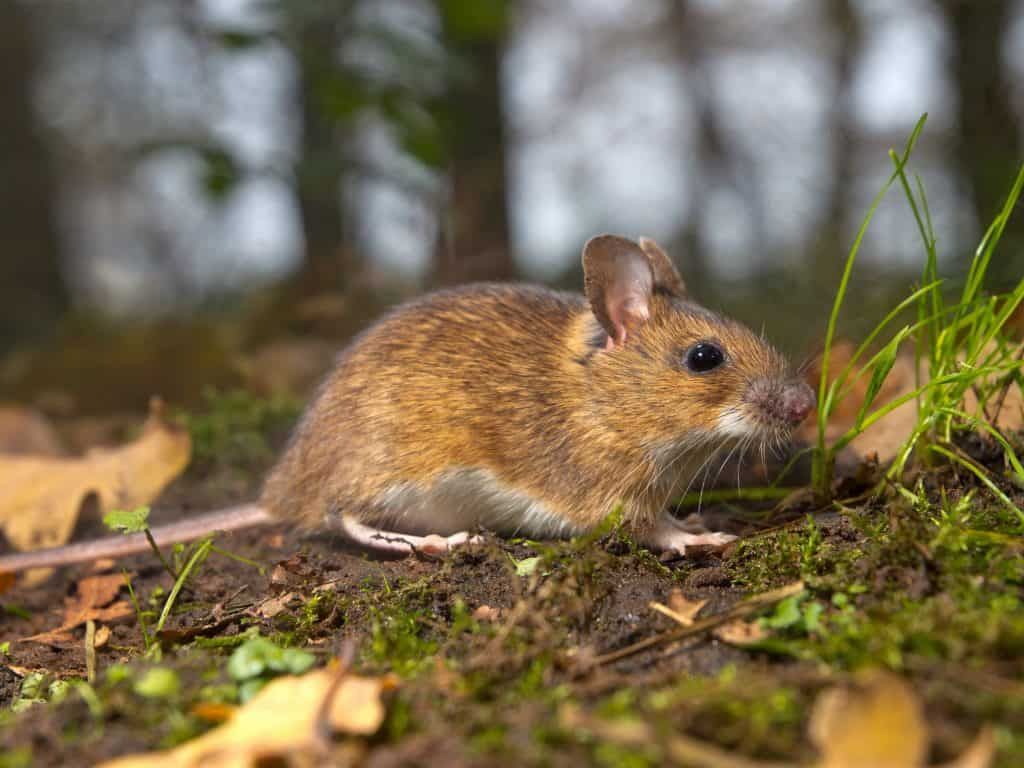
The trouble is that the mulches we tend to use in permaculture gardens: straw, woodchip, or even sheet materials, create a perfect habitat for rodents. In the early years, their numbers may multiply exponentially, but here, patience is key.
In time, predators such as owls, hawks, snakes, and larger mammals will move in to have a feast – and bring things back into balance.
The vacant burrows can be utilized by useful insects such as bumblebees, meaning that along with all the mayhem, the little critters may have done you a service!
Perennial gardening is all about playing the long-game – so accepting short-term losses can be an important part of yielding a long-term gain.
In the Air
In the forest garden, no component of the eco-system is overlooked. The air is a rich habitat for all kinds of creatures, great and small. Some of these we may consider friends, others foes – but in reality, it’s all about striking a healthy balance.
Birds and wasps may “steal” your fruits, greenfly and black fly may prey on your precious herbs, and certain species of butterflies and moths will raise their young on your fruits and vegetables. Yet, if these species are kept in a healthy balance, they can actually add to the all-round diversity and wealth of your garden’s ecology.
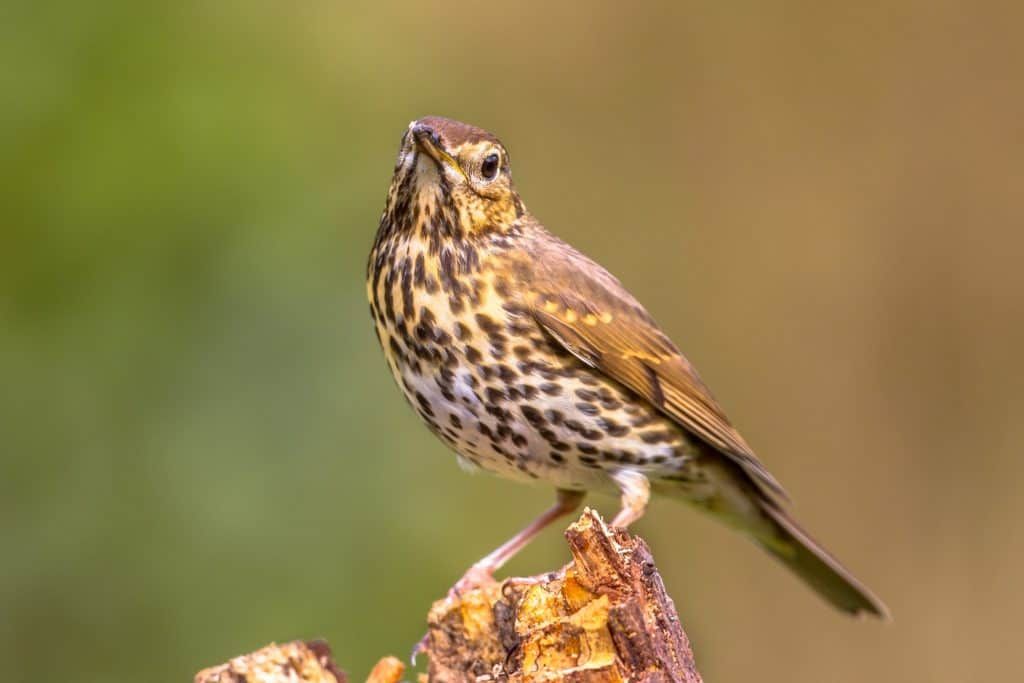
If you notice these species becoming too numerous and causing a problem in your forest garden, consider what would control their populations in nature.
An excess of fruit-eating birds can be balanced by providing or protecting good habitats (such as breeding boxes or hollowed trees) for predators such as hawks, owls, and predatory mammals.
Wasps and hornets can be controlled very effectively by dragonflies. In fact, providing a pond for dragonflies to breed in is a big step towards insect control in general. As these aerial masters scour the garden’s skyline, other flying pests such as cabbage white butterflies will rarely get out of hand.
Sap sucking insects such as aphids and mites are the prime sustenance for predators such as hoverflies, ladybugs, and lacewings.
Hoverflies and ladybugs can be encouraged into your garden by offering them their favorite plants such as umbellifers, alliums, and elder tree species to feed on.
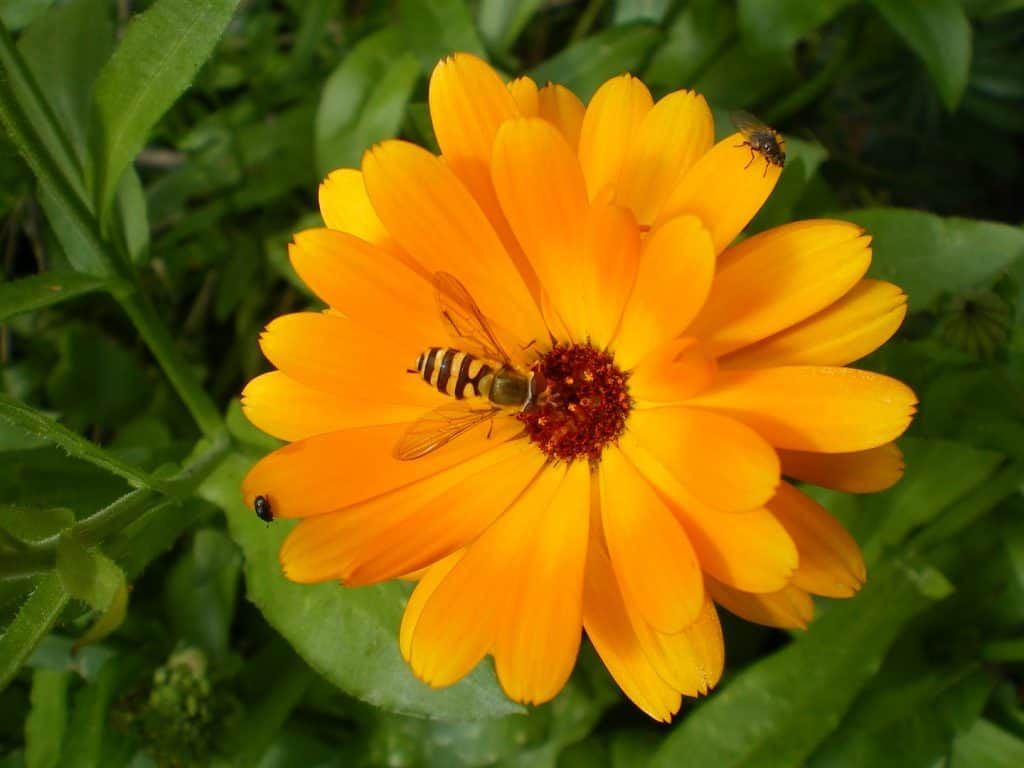
Lacewings and other beneficial insect species can also be encouraged by providing them with “insect hotels” or simply by allowing them to overwinter in the hollow stems of your garden plants rather than cutting them back.
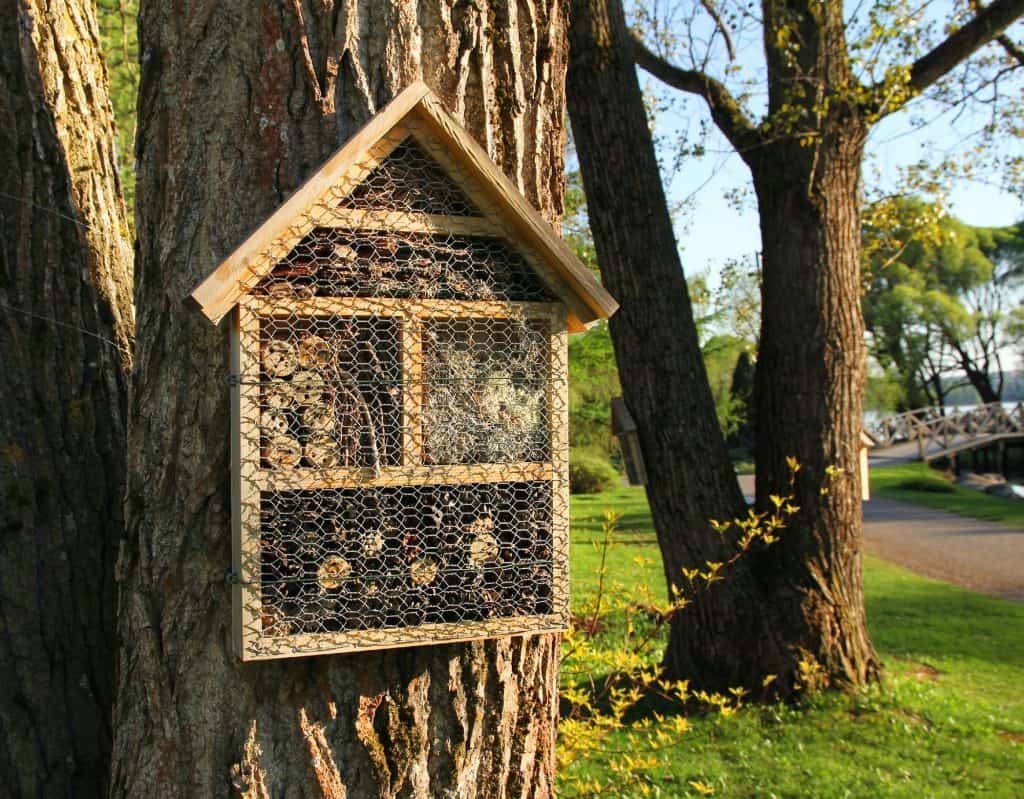
Most species of bats are also incredibly useful in a food forest and will help to keep insect numbers in a healthy balance. Installing bat boxes is the ideal way to boost their populations.
Bats may also help keep mosquito and gnat populations in check, meaning less predation to a key part of the garden – you!
…And the Big Guys!
Deer, moose, wild boar, and other large mammals may also be a significant consideration as part of your food forest web, depending on where you’re located. In the early years especially, these fellows can do some significant damage!
If you’re backed onto wild moorland, bush, or forest, the chances are these herbivores will be just thrilled by all of the new trees and shrubs that you’re planting on their doorstep.
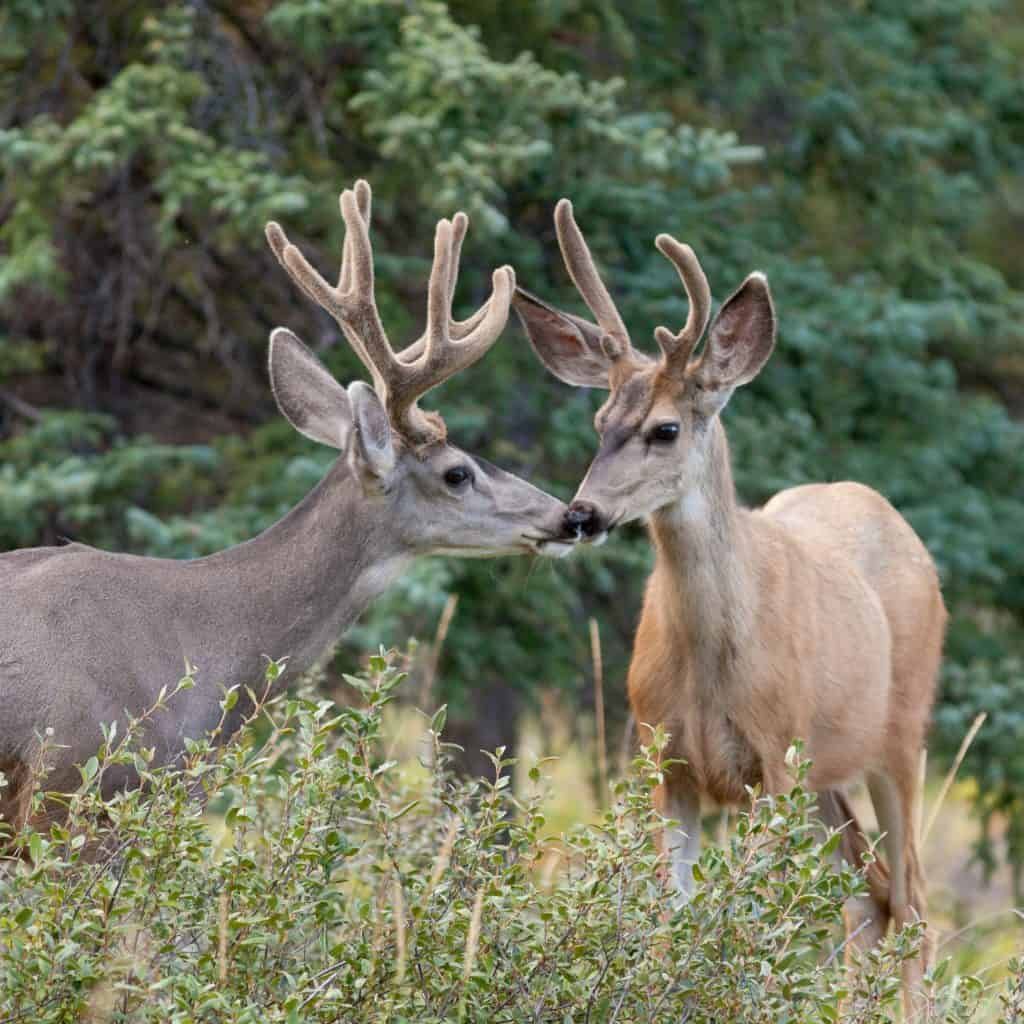
If you have a large surrounding population of large herbivores or omnivores, it may be a worthwhile investment erecting a deer fence around your entire land.
There are however some alternatives following our understanding of nature’s food webs…
Remember that, historically, one of the biggest predators for these species was…us! Therefore, even the smell of humans can be enough to deter small populations of garden-busting beasts in your garden.
If you’re using a compost toilet, try locating it in the part of the garden that large mammals would normally enter. Pee around your garden’s periphery. And when you next have a hair cut, try hanging up your hair in places you’d rather deer and pigs wouldn’t go.
As far as other predators go, there may not be many forest gardeners out there who would welcome wolves or mountain lions into their plot! But, if you have a fast and fearless dog who doesn’t mind playing wolf once in a while, it might fill the niche of a large predator in your ecosystem very nicely.
Permaculture Is All About Thinking Long-Term
Understanding nature’s food webs will allow you much greater power to implement natural systems of restorative control and provide perennial resilience in your garden’s eco-system.
Leaving out pesticides and intrusive methods may seem risky at first, but the long-term benefits you’ll be providing for yourself and your entire ecosystem will far outweigh any short-term gains.

Thanks for reading! How are you keeping a balance in your garden? Do you have problems with pests or is nature helping you out? Let us know in the comments!
Keep an eye out for more from Charlie, including an article on mindful foraging, coming up soon.

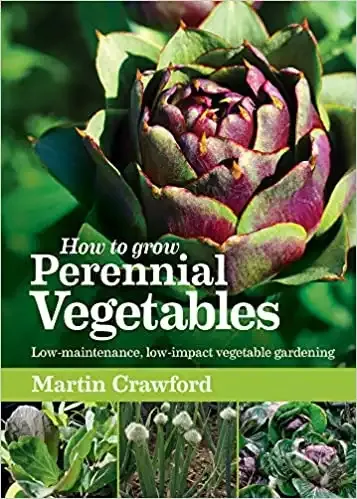
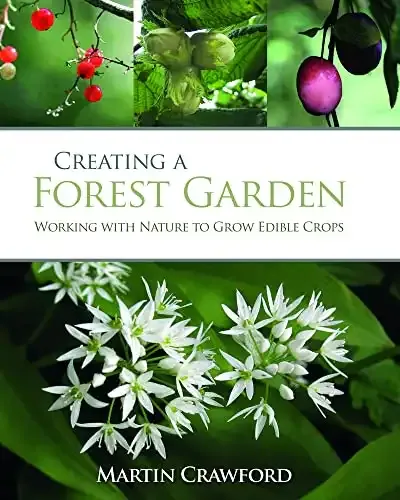
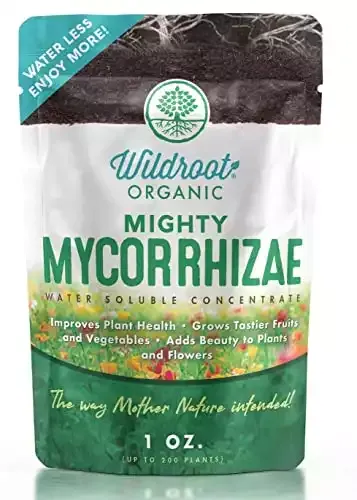
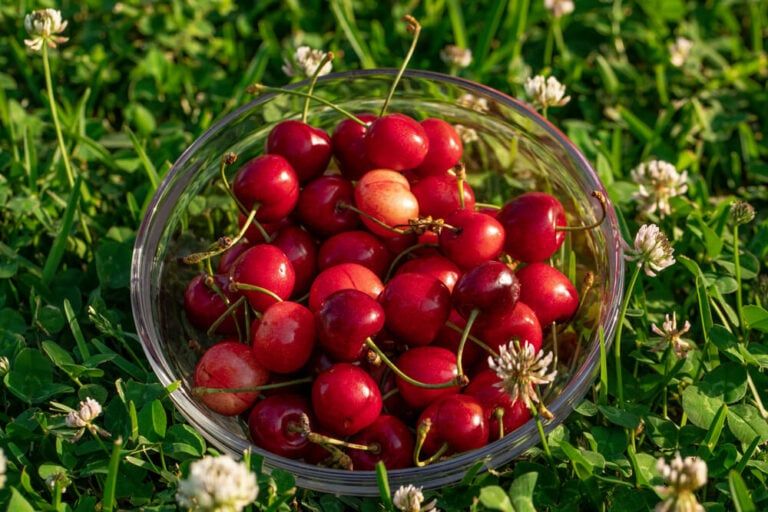
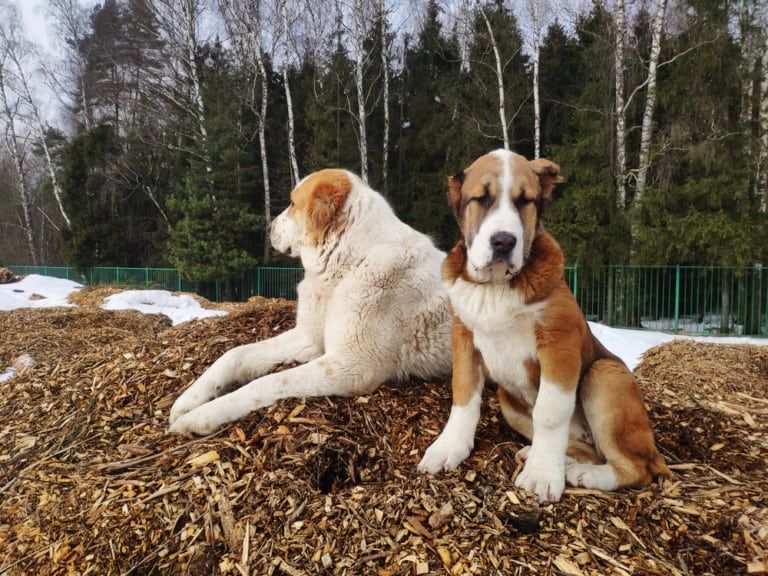
![How to Build a Fence Gate That Won’t Sag [11 Easy Steps!]](https://69be7209.flyingcdn.com/wp-content/uploads/2022/10/wooden-gate-on-rural-property-in-brazil-768x472.jpg)
